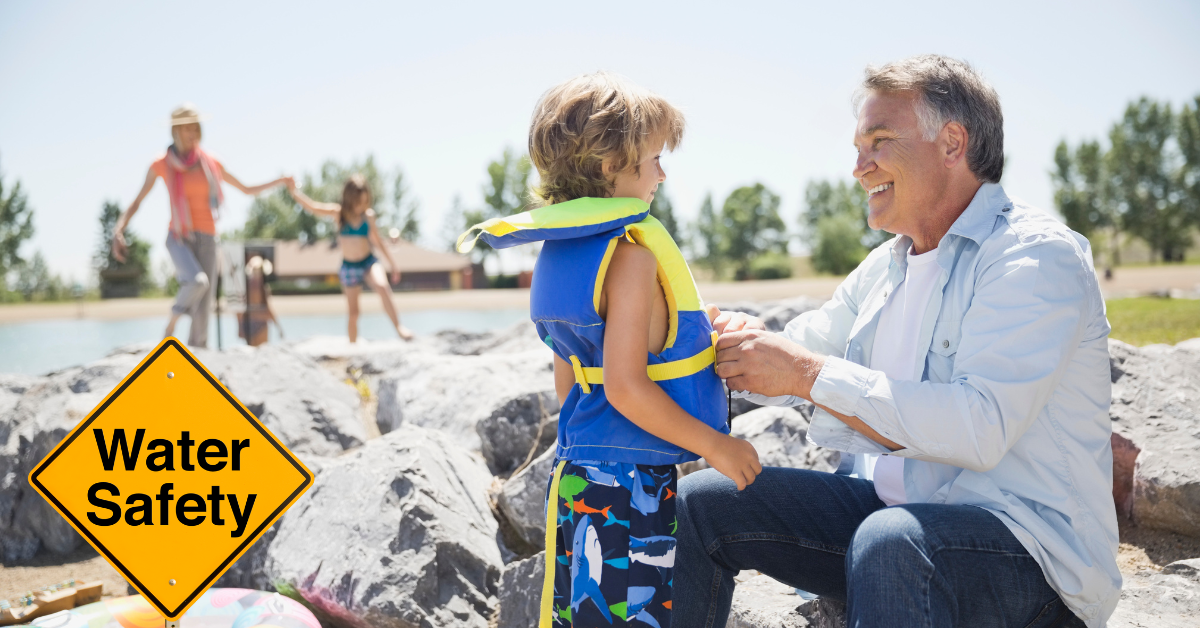Water Safety

Did you know that drowning is the leading cause of death in children? We can all do our part to ensure the safety of children (and adults) by following a few rules and being cautious while having some summer fun. Twenty-three percent of children’s drownings occur during family gatherings near a pool, while most adult drownings occur in natural bodies of water. What does it mean to be water safe? You follow the procedures, precautions, and policies associated with being in, on, or around a body of water where there is a risk of injury or drowning.
The National Drowning Prevention Alliance recommends five layers of prevention:
- Barriers and alarms: Pools should have four-sided fencing with self-closing and
latching gates. Pool alarms and safety covers should be used to prevent children from accessing pools unsupervised. - Close, constant, and capable adult supervision: A designated water watcher or
lifeguard should be present whenever children are in or near water. - Water competency: Everyone should be equipped with the tools to protect themselves in water. Even children as young as one can learn to float and eventually swim. These water safety skills are critical to survival and can decrease the risk of drowning by up to 90% in children ages 1-4.
- Life Jackets: A USCG (United States Coast Guard) approved life jacket that is the
appropriate size and fit for your child should be worn around open water where there is a possibility you could end up in the water unexpectedly. A few examples are falling off any watercraft or being hit by a wave in the ocean. - Emergency Preparation: Having an adult available with CPR training, including rescue
breaths and basic water rescue skills, can be the difference between life and death.
There should always be a phone available to call 911.
What to do in case of an emergency:
● If a child is missing, be sure to check the water first
● Alert a lifeguard if one is present
● Shout for help
● Remove the person from the water (making sure not to put yourself in danger)
● Ask someone to call 911 (do two minutes of CPR before calling if you are alone)
● Perform CPR and use an AED until help arrives
Remember, what they portray on TV is different from what drowning looks like; little to no
splashing or sound is involved.
Please visit the following websites for more information:
